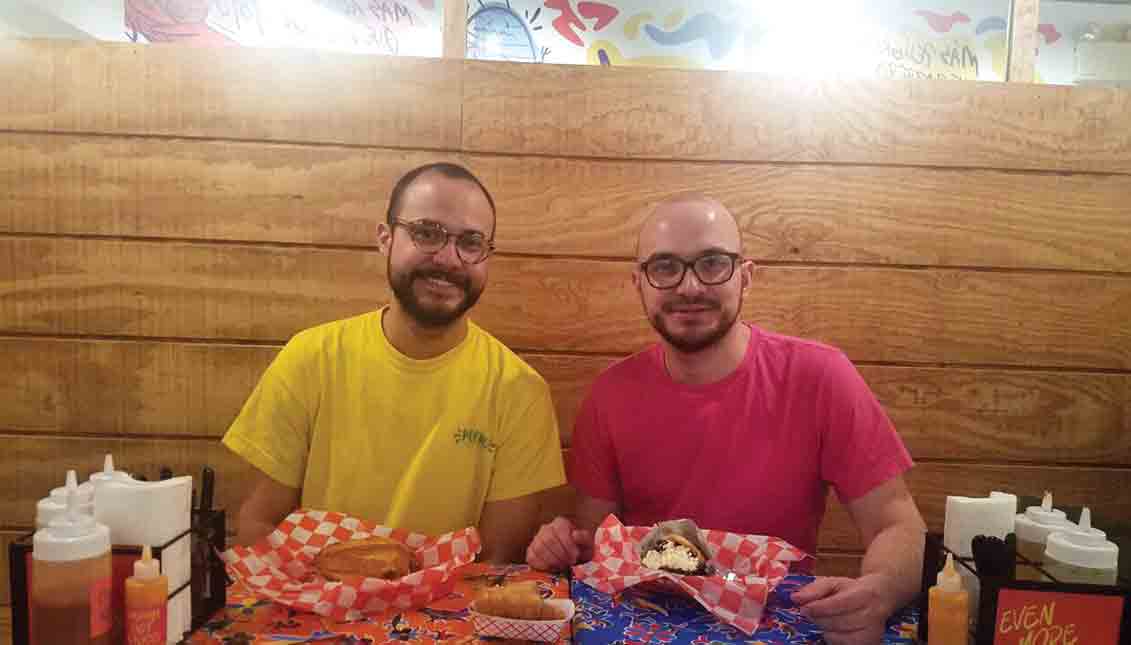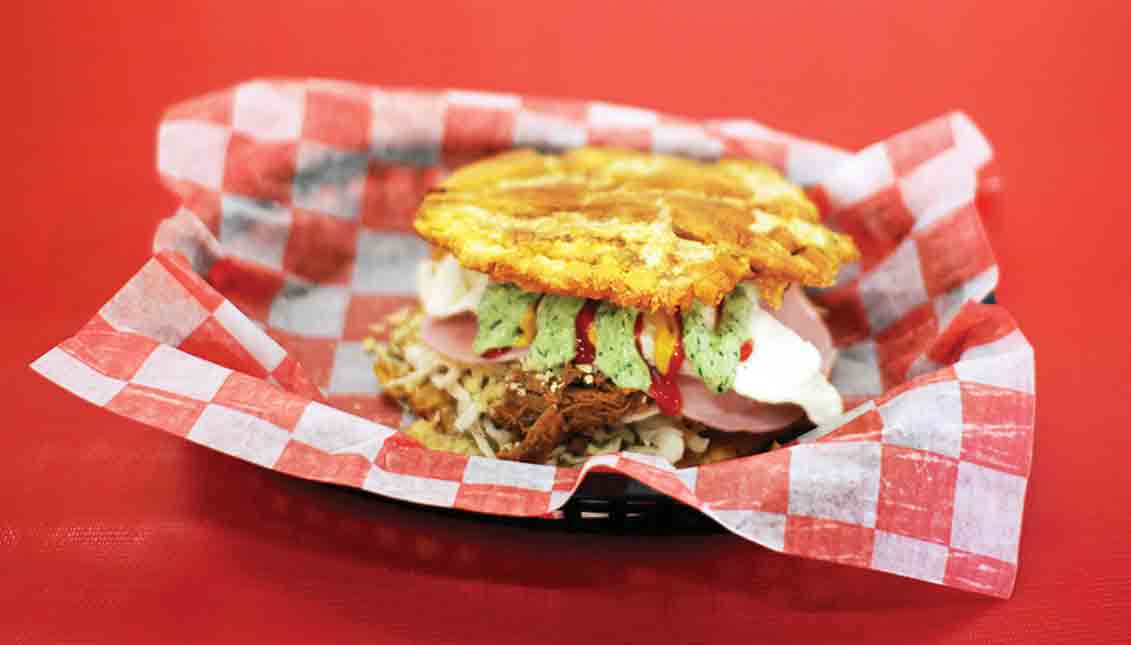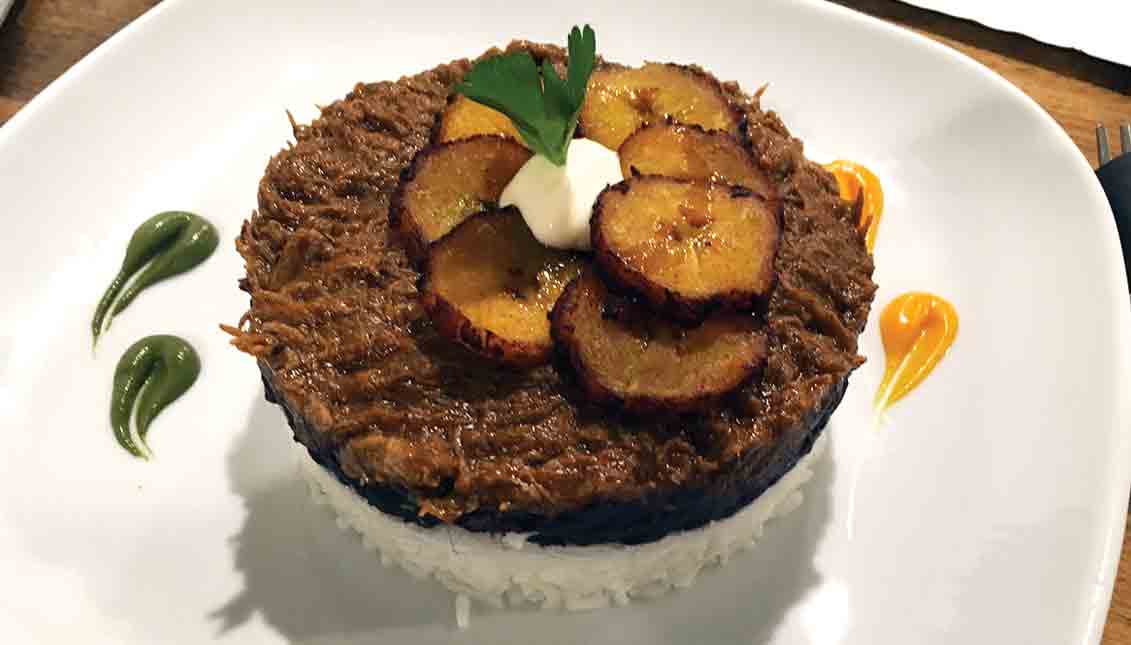
Philly Latino Food Revolution
Two new Venezuelan Restaurants, “Tartareperia 18.64,” and “Puyero Venezuelan Flavor”, mark the latest addition to the rich Latino cuisine of Philadelphia. They…
Tartareperia 18.64 and Puyero Venezuelan Flavor, two Venezuelan restaurants with Venezuelan ownership, have recently arrived to Philadelphia, giving the city a taste for the South American country’s cuisine while marking the latest addition to the region’s vastly changed and evolving Latino food palette.
Almost thirty years ago the only Latin American cuisine in town was “El Metate”, a Mexican-inspired restaurant run by Americans with limited Latino staff. Now a simple Yelp search of “Latino food” in Philadelphia yields hundreds of results with options ranging from traditional Mexican to Cuban to Argentinean to the new Venezuelan restaurants.
Philadelphia has become a veritable destination for those looking to try out Latin-American cuisine.
“When I got here it was a Caesar salad, crab cake kind of town. That was the staple,” said Jose Garces, founder of the Garces Group and owner of over a dozen restaurants in Philadelphia, New York, Washington DC and New Jersey. “There was not a lot of diversity, design centric, environmental style restaurants.”
Starting with the arrival of restaurateurs, such as Garces and Stephen Starr, over the last decade the city’s restaurant scene completely transformed.
“When I worked with (Starr), he had opened 13 spots,” said Garces. “Then I opened 7 or 8 … All of a sudden within a gap of like 5 to 7 years the landscape was totally different.”
Inspired by this vibrant and evolving restaurant scene as well as Philadelphia’s youthful atmosphere, Tartareperia 18.64 and Puyero Venezuelan Flavor have come to the city of brotherly love to leave their own particularly Venezuelan mark.
“What we wanted to do is say this is who we really are so people could see firsthand what Venezuela is really like. You don’t always get to hear about the culture from people from the place. We want to authentically share our culture and identity,” said Gil Arends, one of the co-owners of Puyero Venezuelan Flavor.
Gil, alongside his wife Manuela and brother Simon, specifically chose South Street for the location, drawn by its youthful environment and bustling, vibrant atmosphere.
“Since it’s Venezuelan street food South Street is perfect,” Gil continued, “The restaurant fits in with this culture.”
Hanging on the interior wall of Puyero Venezuelan Flavor sayings emblematic of Venezuelan street life such as, “Barriga llena, corazón contento” (full belly, happy heart) and “más hambre que piojo en peluche” (hungrier than a tick on a teddy bear), greet visitors into the restaurant. Vibrant, bright colors shine throughout, from the menus to the tables to the tint of the food itself.
At the heart of their menu and Venezuelan cuisine is the arepa, a cornmeal breaded sandwich that holds various different fillings inside it. Among the most popular are the Reina Pepiada (shredded chicken mixed with avocado and gouda cheese) or the Pabellón (shredded beef, black beans, fried sweet plantain, and white cheese).

Gil and Simon are intent on making the restaurant as authentic a Venezuelan street experience as possible and have added all the amenities necessary to do so. Green mayo and saracha pink sauces inspired by the condiments of Venezuelan street vendors don the tables and typical Venezuelan drinks such as Pepelón con limón, a sugary lemon concoction, and Cilantro lemonade are available to quench customers’ thirst.
For sides there are the classic Venezuelan Tequeños – deep fried dough wrapped around white cheese, but they have also made an effort to include specialties from their hometown of Maracaibo, such as Mandoca, a cornflower and plantain mix, deep-fried with cinnamon, topped with white cheese and cream, and Pan-con-queso, a hot dog topped with ketchup, mustard, green mayo, white cheese, green cabbage and crisps.
A bit farther north underneath the MFL’s Girard Station in Philadelphia’s Fishtown neighborhood, Tartareperia 18.64 is serving up its own slightly different take on Venezuelan specialties. Instead of the classic cornmeal sandwich, the restaurant has created its own “tarta,” Spanish for cake, version of the classic arepa, called the tartarepa.
“The idea is to take the arepa and make it more crunchy and on the inside more soft,” said Merliz Gómez, the restaurant’s chef and daughter of co-owner Manuel Gómez who initially came up with the idea.
“The ingredients for the arepa are the same,” added Nestor Ayala, a co-owner and the restaurant’s dynamic host, “but this version allows the filling to stay in place. Normally when you bite into an arepa, the filling starts to fall out. With the tartarepa there is no pressure, everything stays put in the arepa.”
This unique shape and texture forms part of the overall artistic aesthetic of each dish.
“You eat with your sight,” said Gómez. “It is more than food, it’s a presentation. A delicate balance between the colors, the art of the plate and of the food.”
One of the restaurant’s most popular dishes, the Reina Pepiada tartarepa, showcases the round, golden brown tartarepa with red and brown dots and brushstroke-like stripes, emblematic of modern art. The green, creamy filling is artfully topped with sliced tomatoes and avocados.
Hidden in the artful decorations are the vast array of flavors and spices that occur throughout Venezuelan cuisine.
According to a blog post on the restaurant’s website, “Venezuelan Cuisine at the moment is a concoction of African, native Indian and European cuisines that has developed over the centuries. The recipes of Venezuela are often found to be affected by Caribbean influences in their flavors, methods of cooking and constituents.”
“We wanted to fuse all this without losing the typical Venezuelan taste,” said Gómez.
The restaurant is a family affair -- two of the three co-owners are Gómez’s brother and father -- and Gómez seeks to bring that homemade touch to her kitchen.
“As a kid, I was interested in cooking. I was always the one watching how my father prepared the food,” said Gómez. “I'm the one that keeps up the family cooking tradition.”
While notable in their own right as fun, authentic Venezuelan restaurants, the appearance of both Tartareperia 18.64 and Puyero Venezuelan Flavor in Philadelphia opening only a few weeks apart is noteworthy as a sign of how far the city has come in its Latin American food offerings over the last few decades.
Philadelphia’s brush with Latino cuisine all started in 1986 when David Suro Piñera bought out El Metate, a semi-Mexican restaurant that had previously been the only place even partially offering latino food in the area.

“El Metate was more than just tacos, and Harry (the owner) really tried, but it was Mexican food through the eyes of a nice Jewish guy from Philly. It was not the authenticity I wanted, the only thing I really knew,” Suro Piñera said several years ago while reminiscing in an interview with the Inquirer.
With a name switch to Tequilas, the name it still carries today, Suro Piñera started his own Mexican restaurant with an all-Mexican staff, including fantastic chefs from across the country.
“We had a kitchen that was incredible, even by Mexican standards. Very authentic, focused on bringing authenticity here,” Suro Piñera said. “Part of our success was because I just didn’t know any better. I remember the very first week we were open, the Marabella brothers and Neil Stein came to eat here. They sat at table three, and as I passed by, working the floor, I heard them say, “There’s no way this restaurant is going to survive. It’s too Mexican for Philadelphia.”
But survive it did. The restaurant was so successful it quickly built up two hours waits and in 2001 moved to another building where it is today with a partial rename as Los Catrines Restaurant and Tequilas bar. The company has grown and now includes its own liquor company Siembra Azul that holds several Tequila labels.
“It’s Mexico culinarily speaking, it’s Mexico through spirits. We’re just trying to express, “What is Mexico really about?” said Suro Piñera.
Over the years the number of Latin restaurants grew in Philadelphia initially thanks to talented restaurateurs who saw an opening for thematic, environment based restaurants in the city.
One such example is Chef Garces, a second-generation Latin American immigrant with roots originating in Ecuador. His company owns and operates over a dozen restaurants. Among those in Philadelphia of the Latino variety are Amada, Buena Onda, Distrito and Tinto.
In his own right, Garces has emerged as one of America’s leading chefs having won on the show Iron Chef and being awarded the prestigious James Beard Foundation’s “Best Chef Mid-Atlantic” prize.
While he was trained in classic French cuisine at the Kendall College School of Culinary Arts in Chicago and has cooked in all types of restaurants from American to Greek to Spanish, he chose to focus on Latin cuisine for his career because it was something he felt passionate about that not a lot of other people were doing.
“It was based on a personal decision to focus on the Spanish speaking countries and their cuisines knowing that there was a lot of discipline there. There was a gap in the marketplace.”
While he had previously been opening chef at El Vez in center city with restaurateur Stephen Starr cooking Mexican, his first restaurant in Philadelphia was Amada, a Spanish tapas place.
“I had a business plan from my last semester at culinary school that described this tapas restaurant concept. So I dusted it off and it looked pretty good. It was working and I used that to open Amada.”
Today the organization has grown and now includes the Garces Foundation non-profit that aims to help the local Latino community through community health days and English as a second language classes.
RELATED CONTENT
“I saw that there was a need for the workforce to gain better healthcare, resources as well as really helping them advance through English language training,” said Garces.
The foundation is heavily involved in the community and raises funds for its programs with food events such as one on March 24th at the Loews Philadelphia Hotel that will feature tastings from some of the city’s upcoming chefs.
The success of people like Garces in the last decade in Philadelphia has paved the way for a whole new world of food options in the city.
“This second generational thing I’ll call it. Young, up and coming, kind of one-off, two off chefs who come and notice that Philly is a good market to do business,” Garces said. “They’re doing their restaurants in developing neighborhoods and focusing on neighborhood style eateries.”
These small, up and coming places, similar to Puyero Venezuelan Flavor and Tartareperia 18.64, have done quite well. Born and raised in Northwest Argentina, entrepreneur Jezabel Careaga has operated a café with Argentinean food, such as empanadas, tartas and alfajores, in the Fitler Square neighborhood for almost 7 years.
“In our neighborhood, people have traveled, they have spent time in Argentina and they are looking for something new. That’s when we come in perfect.”

To this end, Jezabel has spent a significant amount of time integrating her cuisine into the community challenging stereotypes about what Argentine food really is.
“We have this misconception that because it’s Argentinean because its European the food shouldn't be spicy … You have to be open minded.”
The concept has been quite successful in the community and the popularity of Jezabel’s Argentinean food has surged over the years.
“The menu really evolved since when we opened to today. At the beginning we carried muffins and croissants and bagels and we had just a few Argentinean dishes. If we sold 20 empanadas a day it was a lot. Today we go through 15 trays of 20 empanadas a day like nobody’s business.”
The success of smaller, Latino cuisine places in Philadelphia was highlighted most recently on the national level when Bon Appetit Magazine chose South Philly Barbacoa as the #6 best new restaurant of the year 2016.
Once only a small two-person food delivery service for construction workers operating out of a one-bedroom apartment, the restaurant has capitalized on the city’s passion for Mexican food.
“For me, Philly is one of the richest communities because it is a city that wants to eat well,” Chef Cristina Martinez said while showcasing her restaurant for Bon Appetit.
The restaurant specializes in barbacoa, which is slow cooked lamb marinated in a pot. It is a family tradition of Chef Martinez’s and one she came to America hoping to share with the locals.
“I always dreamed about being in a city where I could cook my barbacoa,” said Martinez.
Looking forward, the consensus among entrepreneurs in the restaurant industry is that the future of Latino cuisine in the city will be more places like Puyero and Tartareperia 18.64, exemplars of fast casual dining.
“Very light, fresh restaurant quality, low price point, done very quickly. That’s having an impact on the scene as we stand right now… and is looking the like the future of food in a lot of ways,” explained Garces.
“I think fast casual is the way to go and I think that’s so European,” said Jezabel Careaga. “Whatever I do has to be sustainable. So I think if you tie fast casual with sustainability and you tie the product along those lines then that could be kind of the future.”
Jezabel has already started incorporating these ideas on “pop up pincho” nights at her café where, like in Spain, customers can go up to the bar, quickly grab a pincho then pay at the end.
Tequilas owner David Suro Piñera is particularly excited about what this new young generation of chefs is doing.
“Latino and Mexican food is at another level now,” said Suro Piñera. “There’s a whole young generation of Latino chefs who are shaking up the culinary world… In a way Mexican food was the first real global cuisine with both pre-Columbian and European influences. I’m happy to see that it is still evolving.”
No matter what it is clear the city has come a long way since Tequilas first opened in the eighties.
“Thirty years ago our concept (at Tequilas) was so avant-garde and ahead of the time,” said Suro Piñera. “Now we are just an average Mexican restaurant.”










LEAVE A COMMENT: